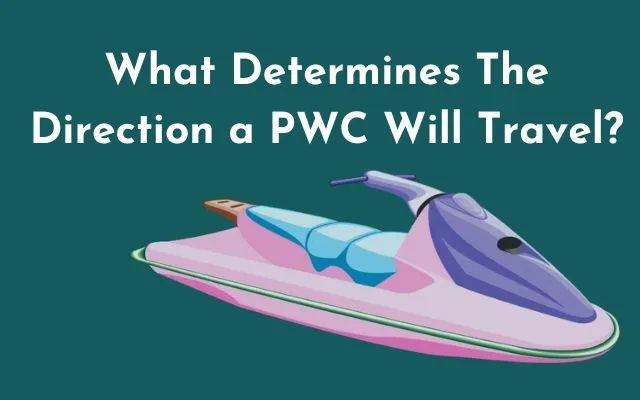Have you ever wondered what determines the direction a PWC (Personal watercraft) will travel? Understanding this precious information ensures your readiness for any water trip. Let’s dive into the factors determining a PWC’s trip direction.
A Personal Watercraft( PWC) is a marine vessel powered by a machine. The driver uses the steering and throttle controls to decide which way the PWC will go. Wind, drift, and water face conditions all impact the direction of a PWC. All these conditions can make it difficult for drivers to control their PWCs.
Another factor is the swells or currents in the water. However, they can push the PWC in a specific direction If there are solid swells or currents. Eventually, wind can also play a part in determining which way a PWC will go.
What determines the direction a PWC will travel?
Numerous factors affect the direction of PWC. Environmental factors can have a significant impact on the bottom line of a company.
Commercial governance is also an essential factor in determining a company’s direction. Internal procedures and decision-making must be practical and strategic to ensure profitable success.
Likewise, external pressures from stakeholders can affect PWC’s direction. The prospects of investors or other realities can change, and leadership must be able to respond. Trends and technological advances can also impact the choice of direction.
Weight Distribution
The weight distribution of a personal watercraft (PWC) significantly impacts its direction. Changing riders on the craft or the weight movement around the balance point can affect it.
To maintain the nose up, put the weight forward and toward the center of the art. The craft will plow through the water instead of cutting through it when it places its importance too far posteriorly.
Water Temperature
The direction of a particular watercraft (PWC) depends on the water temperature. It’s an essential factor to take into account. Warmer water will beget the spurt thrust to move the PWC to the right.
Colder water causes the spur thrust to move the PWC to the left wing. Either way, water temperature affects the speed of the PWC’s acceleration.
waves
The wind blowing over the face of the water creates waves. They act as a handicap to a PWC, pushing it off its willed path.
The PWC may crash and turn due to stronger waves, changing course. The wave power and the PWC’s size also determine the PWC’s direction.
Rudder’s Angle
The direction that the rudder also controls a PWC travels. The rudder’s angle determines the angle.
However, if the rudder isn’t set correctly, it’ll cause the PWC to turn in the opposite direction. You must comprehend this idea if you want to keep yourself out of trouble with a PWC.
Pivotal Part
The rudder is a vital part of a PWC. It aids in choosing the PWC’s course. However, if the steering control is released, the rudder will move to the opposite side.
However, the PWC will turn right if the steering is lost. Still, the steering control will have to be maintained. This is pivotal, as it can affect the direction of the PWC.
Maintained of Power
Using a rudder is essential to maneuvering a PWC. It’s important to use a rudder that can turn to one side.
For illustration, the PWC will turn right when riding a rudder to the left wing. In other words, the rudder is the angle at which the PWC will travel. It also helps to maintain power.
How the Steering Control Works
Inside the body of your spurt ski, the steering column is linked by lines to the beak at the reverse of the vessel. Turning the PWC to the right pulls the strings and directs the brim so that the burned end faces the left wing of the PWC, and you turn in the same direction you chose.
When you turn left, the lines pull in the opposite direction; the end of the snout moves to the right, and you progress in that direction until you straighten out the steering wheel.
Engine Power And How It Affects PWC Turning And Acceleration
Machine power affects the acceleration and turning of a PWC. A vital machine allows the PWC to speed up and turn more. Riders have further control of the boat in different conditions.
This makes navigating turbulent water simpler. A more critical machine gives the PWC more capacity to carry heavier loads. This makes it comfortable for larger groups of riders.
What’s the difference between a boat and a PWC?
PWCs are operated by one person and frequently have seating space for others.
Conclusion
A PWC’s motion through the water is affected by several distinct factors. These include the machine’s strength, the spurt pump’s thrust, and the impact of outside variables like wind and water currents.
The four most crucial factors are the craft’s weight, the machine’s power, the water’s quality, and the rider’s weight. A voyage out on the sea may be made safer and more comfortable by being aware of the surroundings, the ship, and the substances.
Riders may improve their route planning and ensure their safety while having fun by being aware of this. The same goes for understanding safety procedures and how to follow them in an emergency.
What Establishes The Course A PwC Will Travel is a complicated amalgamation of elements that, when put together, will demand a reliable and safe voyage.
